PepsiCo Global R&D: Catalyst for Growth
Chief scientific officer Mehmood Khan is positioning R&D for innovation through knowledge transfer, new skill sets, and global partnerships.
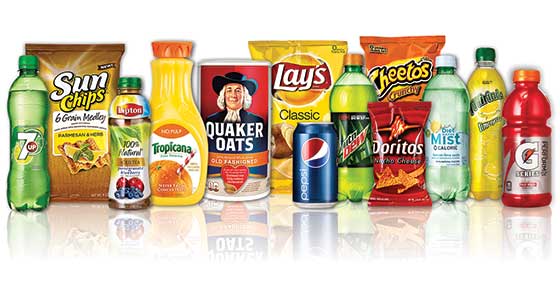
Each day more than a billion consumers in 200 countries eat or drink a PepsiCo product—from beverages, juices and yogurt to snacks and grains & cereals. Figuring out what those culturally diverse consumers want today and in the future and how to deliver it to them sustainably is the job of Mehmood Khan, PepsiCo’s executive vice president and chief scientific officer.
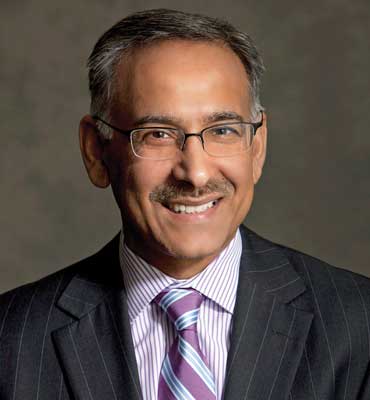 Dr. Khan, an endocrinologist and physician who joined PepsiCo in 2007, believes the food environment began to shift about a decade ago when digital communications and social media accelerated information exchange and consumers became more aware of what they were eating and started asking more in-depth questions about the food supply, such as where does my food come from and how is it manufactured. Due to this evolving consumer environment, Khan is transforming how PepsiCo Global R&D approaches research, technology, product development and nutrition through cross fertilization of personnel, new skill sets, and global partnerships focused on innovation and growth.
Dr. Khan, an endocrinologist and physician who joined PepsiCo in 2007, believes the food environment began to shift about a decade ago when digital communications and social media accelerated information exchange and consumers became more aware of what they were eating and started asking more in-depth questions about the food supply, such as where does my food come from and how is it manufactured. Due to this evolving consumer environment, Khan is transforming how PepsiCo Global R&D approaches research, technology, product development and nutrition through cross fertilization of personnel, new skill sets, and global partnerships focused on innovation and growth.
Focus on the Consumer
“As we think about the future, we are really thinking about broad ecosystems centered around our consumer,” said Dr. Khan. “But we have to think about everything—from our supply chain, seed, through to shelf because our business is designing, developing, making, moving and selling our products. And so the future to us is that end-to-end system.”
We look at it from what the consumer wants to consume—desires, tastes, all that are evolving in terms of cultural changes, awareness, health and wellness initiatives, and the broad information on the Internet. That’s all shaping where the consumer wants to go.”
But just as important from a business point of view is the entire supply chain. “Where are we going to make our products? What ingredients are we going to put in them? Where are we going to procure them from? Who’s going to grow our agricultural products, and how are we going to get it to the consumer? So as we think about it, we’re touching academic institutions, we’re touching our global partners, our suppliers, and, of course, our own knowledge in terms of understanding the consumer and our insights. But we always bring it back to the consumer,” explained Dr. Khan.
--- PAGE BREAK ---
Two global consumer megatrends that are high on PepsiCo’s radar are the growing population migration from rural to cities and the role of diet in consumers’ health and wellness.
“We know the population of the world today is around 7 billion—about 50% is urban, about 50% is rural,” noted Dr. Khan. “By 2050 about 70% of the population will be in cities. Seven billion people by the year 2050 will be living in cities. A lot will be living in megacities. There’ll be two dozen or more megacities with populations of in excess of twenty million.”
According to Khan, the demographics is going to shift in geography, and the shift in economies from Western developed, Northern economies to Eastern and more Southern hemisphere economies, moving into the East, in particular China, India, the Asia Pacific, South America, (dominated by Brazil), and then the emergence of Africa. The young and youth will predominate in Asia and South America, while aging populations will swell in Western Europe, Japan, and North America. “We’re recognizing that even China is going to have a substantial aging population. What is going to be the impact of that demographic on our business, our products and particularly from an innovation and development point of view?” asked Dr. Khan.
When it comes to health and wellness, “the consumer today is far more tuned in to thinking about their personal health, what they consume, and far more aware of the ingredients in their products and where they are sourced from,” said Dr. Khan. “However, health and wellness is a very personal perspective. What it means to you and me in the United States may have a very different meaning to a person in China. So the science doesn’t change, but the cultural interpretation of health and wellness changes by location.”
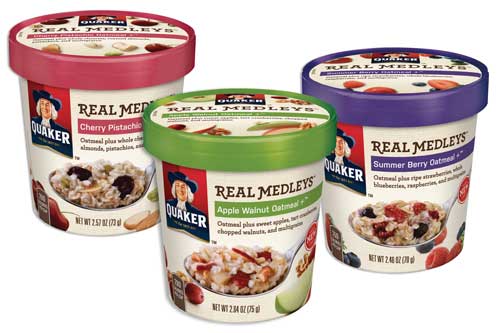 Transforming R&D for Growth
Transforming R&D for Growth“Up until about 2005 or 2006, our industry grew very successfully with a tried formula. Have great brands, do a lot of refresh research, create a new flavor, new color, go around the world, launch the same product, and make it aspirational, and you grew,” noted Dr. Khan.
But things started changing over the last decade. “Consumers became more aware, had more knowledge, started asking more questions, and culturally relevant products started to become even more important,” said Dr. Khan. “So that was the challenge to solve. Now, how did we transform to meet that challenge? To me, it started first and foremost with getting the right expertise. For example, at PepsiCo we had great talent, but the talent was divided by foods, beverages, snacks, and our traditional Quaker nutrition. And you could build a career here at PepsiCo never having transferred from one division to the other.”
Having dedicated researchers worked great in the old model, “but there was no leverage of technology and knowledge across these divisions, which meant that we were not maximizing our potential,” remarked Dr. Khan. “We started doing a few things to build one global team. We started moving people from foods to beverages, beverages to foods, snacks to beverages, and so on. And with that, knowledge transfer started to happen. The second was to bring in added talent with new skills—computational mathematics, biology, material science, physiology, endocrinology, agronomy, culinary—I can go on and on. And the last piece of this was really aligning this R&D organization globally with appropriate business growth platforms.
“We went from thinking about an individual product to what we would look at as technology platforms that can be applied to multiple businesses. For example, we are building a world class flavor team that can apply its skills as equally to Quaker foods, to Frito-Lay snacks, or to Pepsi beverages.”
--- PAGE BREAK ---
A good example of this new thinking is the recent launch of a dairy-based drink with oats in China. The new product features local flavors which are relevant to the Chinese consumer. “Historically, Quaker was a food company. They had no knowledge of how to do beverage technology, let alone bottling, production, design or even the flavor systems of a liquid versus a solid,” said Dr. Khan. “By taking beverage people and having them work on foods, they started to create a whole line of products. It’s becoming a global platform—drinkable oats. Likewise in Quaker, we launched Medleys, which is a convenient form of oats with nuts, seeds, and dried fruit. The flavor technology came out of our beverage organization.”
The notion of foods being solid and beverages being a liquid is really old-fashioned, according to Dr. Khan. “One of the questions I love asking is … So what is a drinkable yogurt? Is that a food or a beverage? Or if it’s a spoonable yogurt that’s a food, but if it’s a drinkable one it’s a beverage? Is that how the consumer thinks? I don’t think so. A consumer says, ‘I’m going to have a snack or I’m going to have something.’ The form comes after that thought. There’s been some great opportunity, that’s just the start. There’s more to come.”
In its effort to add talent and strengthen its skill set, PepsiCo turned to the culinary profession. “We brought the kitchen into our lab,” said Dr. Khan. “We brought the chef’s expertise and the art of the chef and married it with our science.” This helped to create a Doritos-seasoned taco at its partner Taco Bell. “Since launch, in less than 36 months, the new taco has generated more than one billion dollars in sales,” said Dr. Khan.
Innovation on the foodservice side has also extended to beverage equipment. “Our traditional fountain technology pushing a lever for one variety of soda is a thing of the past,” noted Dr. Khan. “We have developed a machine that can give you more than a thousand combinations of drinks. It has the ability to recognize what you like to drink and allow you to be creative—consumer engagement. In the future consumers will want to engage with our industry in ways that we’ve never thought about … we’ve just started.”
How has this new thinking and approaches contributed to business growth? “Let’s take a look at 2013 and some facts. Nine of the top 50 new product launches in all major channels in the U.S. came out of PepsiCo. Five came out of beverages, four out of foods. So it was across the company. Our innovation revenue grew from 8% to 9% of our total revenue,” declared Dr. Khan. “With our total revenues of $66 billion, a 1% increase is almost 700 million dollars of incremental revenue from innovation. So this starts to tell you that the transformation is starting to deliver. At the end of the day, we are now a global organization with the power of one mindset across all of our businesses, leveraging our skills and our scale.”
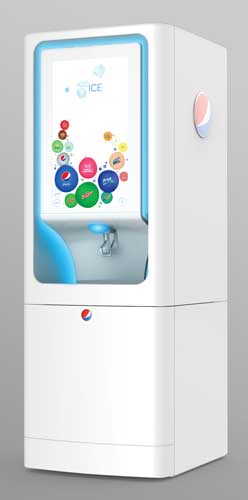 Meeting Future Challenges
Meeting Future Challenges
One of the biggest challenges facing humanity is how to feed the estimated 9.5 billion people on the planet by 2050. “A billion people are hungry today. If the world’s population is increased by another 2 billion, how many are going to go to sleep every night hungry? Who’s going to help change that? Obviously governments, NGOs, but the food industry has a role,” said Dr. Khan. “Ninety-some percent of the world’s population buys its food and beverages from the private sector. We have that opportunity for this massive increase in consumer base. The question is are we going to be smart enough to anticipate what they need, but also anticipate what it’s going to take to deliver that.”
Khan is optimistic and believes that some of the solutions are already available. “Let’s take one example. About 40% of the food that we produce on the planet today goes to waste after it’s harvested. That means there was enough water to grow it, there was enough fertile soil for it to grow on, and we had the manpower to harvest it,” said Dr. Khan. “In the developing world like Asia and Africa, it’s primarily wasted because there’s a lack of infrastructure such as refrigeration and distribution. In developed markets, a lot of it is wasted post-harvest and thrown out of our restaurants and our homes. If you want to feed a billion more people, all you have to do is save half of that food that has already been produced from wastage. And you don’t need more water, you don’t need more land, but you have to figure out how to do this.”
In 2007, PepsiCo set a global goal to reduce water consumption by 20% per unit of production by 2015. “It was an ambitious goal, but thanks to a great team from our sustainability side, our operations side and our R&D side, we delivered about three to four years ahead of schedule,” said Dr. Khan. “We continue to look for further opportunity. For example, we have a plant in Colombia that reuses 70% of its water. Drip irrigation is another example. When we helped develop the capability of growing potatoes in Mongolia, it was not only was our seed potato technology but also our irrigation technology that we brought there.”
--- PAGE BREAK ---
In addition to its scientists working on the challenges of water, sustainability, food, and nutrients, PepsiCo is leveraging the academic and research community. “In the past 48 months, we’ve signed over 50 agreements with R&D organizations and academic institutes around the world,” said Dr. Khan. “We’re engaging these experts, our faculty peers, and saying let’s work together on this. We can be the catalyst.”
PepsiCo is applying this partnership approach to potato research. “Every single potato on the planet came from Peru. If you go to Peru today, there are one thousand-plus varieties of potato in that one small ecosystem. So what makes us think that the potato varietals that survive best in Wisconsin are going to be equally at home in Punjab in India or sub-Saharan Africa? It’s not the case,” said Dr. Khan.
“Are we going to find that varietal in our lab? Are we going to find it on the hills in Peru? That’s where my mind is, let’s take some scientists, collaborate with those scientists, and look for the varietal that needs less water, has more stability post-harvest in a dry environment, and maybe has a yield which is much better for that,” noted Dr. Khan. “Look for fruits in South America that could enter our supply chain. There are challenges in our traditional citrus supply chain, for example. Greening is a global issue. We need to look for varieties and solutions and alternative fruits from these areas.”
Some of the solutions to the challenges facing the food industry are already being applied in other industries. PepsiCo has started using computational modeling—which has been used in the petrochemical, pharmaceutical, and energy industries—on its processing technology and engineering. “We’ve had great success in re-looking at a food processing line and saying let’s model that. Instead of building one, let’s model the process,” said Dr. Khan.
“We’re looking at materials that are used to coat wind turbines to stop them from getting dirty,” declared Dr. Khan. “Why not apply that material to food processing lines, so they don’t get dirty?” The resulting benefits could include reduced microbial risks, fewer cleaning regimens, decreased use of water and cleaning agents, and lower maintenance.
But disparate technologies are not enough, according to Dr. Khan. “The key to me though is not any one technology; it’s convergence of these technologies. Often a technology is not going to completely disrupt, but when multiple technologies seem to converge at a place, you’re going to find that convergence starts to paint a picture that says this is what the future is likely to be. That requires experts with a broad background. Make sure you have enough people in your own organization that have the diversity of thinking, diversity of background to be able to recognize these patterns.”
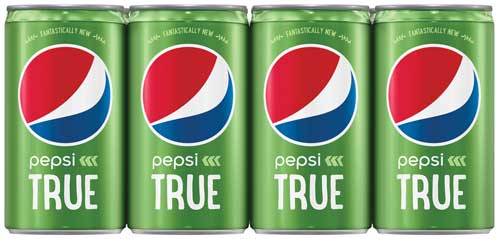 The infusing of new disciplines like physiology into the R&D process has altered product development. “The food industry for way too long has been focused almost exclusively, certainly disproportionately, on taste and experience,” said Khan. “Being a physiologist, being a physician, we’re looking at our consumer far more holistically now. Not only what their sensory experience is, but what this product is going to mean to their body. That thinking is starting to impact how we design and develop products.
The infusing of new disciplines like physiology into the R&D process has altered product development. “The food industry for way too long has been focused almost exclusively, certainly disproportionately, on taste and experience,” said Khan. “Being a physiologist, being a physician, we’re looking at our consumer far more holistically now. Not only what their sensory experience is, but what this product is going to mean to their body. That thinking is starting to impact how we design and develop products.
“A substantial number of our products now, and at least half the products we’re developing, are either low sugar to no sugar on the beverage side, for example. It’s a huge shift in our portfolio,” said Dr. Khan. From 2006 to 2011, about 370,000 tons of added sugar was removed from PepsiCo beverages in the U.S.
Bob Swientek is Editor-in-Chief of Food Technology magazine ([email protected]).
